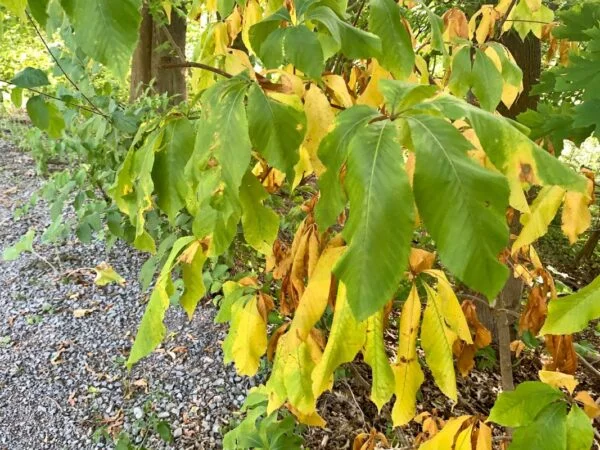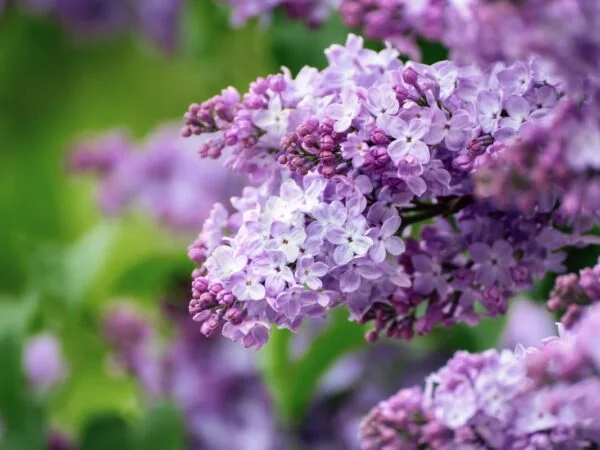Looking to propagate a lilac bush successfully? Wondering how to expand your garden with beautiful blooms? Well, you're in the right place! In this guide, we'll delve into the art of propagating lilac bushes, sharing expert tips and tricks to help you grow your own lilac oasis.
Key Takeaways
-
Propagating a lilac bush can be done through various methods such as cuttings, water rooting, suckers, offshoots, buds, and seeds.
-
Prepare for propagation by gathering necessary tools, selecting healthy plant material, and choosing the right time for propagation.
-
Propagating from cuttings is an effective method that involves taking a cutting from a healthy lilac branch and encouraging root growth.
-
The water rooting technique allows you to root lilac cuttings in water before transplanting them into soil.
-
Growing from suckers, which are shoots that grow from the base of the main plant or offshoots, is another way to propagate lilacs.
-
Remember to care for new lilacs by providing proper sunlight, watering, and soil conditions to ensure their healthy growth.
Lilac Propagation Overview
Methods Summary
Propagation of lilac bushes can be done through several methods. One common technique is softwood cuttings, which involve taking young, green stems. Hardwood cuttings are another method using mature wood. While softwood cuttings root quickly, hardwood cuttings are more resilient. Layering is a natural propagation method where a branch is bent and buried to encourage root growth.
-
Softwood cuttings:
-
Pros: Quick rooting
-
Cons: Requires careful monitoring of moisture levels
-
-
Hardwood cuttings:
-
Pros: Resilient to harsh conditions
-
Cons: Slower root development compared to softwood cuttings
-
-
Layering:
-
Pros: Natural and reliable method
-
Cons: Takes longer for new plants to establish
-
Best Season
The ideal seasons for propagating lilac bushes are spring and fall. Spring offers warm soil temperatures that promote rapid root growth. Fall planting allows roots to establish before winter dormancy, giving the plant a head start in the following spring. Spring planting is advantageous for quicker establishment, while fall planting ensures a strong foundation before winter.
-
Spring Planting:
-
Advantages: Rapid root growth due to warm soil
-
Disadvantages: Increased risk of diseases in humid conditions
-
-
Fall Planting:
-
Advantages: Roots establish before winter dormancy
-
Disadvantages: Slower initial growth compared to spring planting
-
Propagation Benefits
Propagating lilac bushes offers various benefits for gardeners. It allows you to expand your garden without purchasing new plants. By creating new lilac bushes through propagation, you can ensure they adapt well to your specific growing conditions. Moreover, propagating plants can be a rewarding experience that enhances your gardening skills.
-
Benefits of Lilac Propagation:
-
Expansion of garden without additional costs
-
Customization of new plants to suit specific needs
-
Preparing for Propagation
Material Gathering
To successfully propagate a lilac bush, you will need sharp pruning shears to cut healthy stems. rooting hormone is crucial for stimulating root growth. Ensure you have potting mix, preferably rich in organic matter, and small pots or containers. Using high-quality materials is essential as they promote successful root development and overall plant health. When sourcing materials, look for reputable garden centers or online suppliers known for their quality products.
Site Selection
Selecting the right site is vital for propagating lilac bushes. Choose a location that receives full sunlight to promote healthy growth. Opt for well-draining soil to prevent waterlogging, which can lead to root rot. Good soil quality is key, so ensure it is fertile and loose enough for roots to establish easily. Proper drainage helps prevent water accumulation around the roots, reducing the risk of diseases. By considering these factors, you can create an optimal environment for successful lilac propagation.
Timing Importance
Timing plays a critical role in the success of lilac bush propagation. The best time to propagate lilacs is during the early summer months when plants are actively growing. Avoid propagating during extreme temperatures or frosty conditions as they can stress the plant and hinder root development. By timing your propagation efforts correctly, you increase the chances of successful root establishment and overall plant survival. Remember that timing directly impacts the success rate of your propagation attempts.
Propagating from Cuttings
Cutting Selection
Choosing the right cuttings is crucial for successful lilac bush propagation. Look for young, green offshoots that are free from diseases or pests. Ensure the cuttings have at least two sets of healthy leaves.
Ideal cuttings should be around 4-6 inches long and taken from the current season's growth. These cuttings are more likely to root successfully compared to older wood. Select cuttings with a firm texture and avoid those that are too soft or woody.
To choose healthy cuttings, inspect them closely for signs of damage or disease. Opt for sections of the plant that are actively growing and show no signs of stress. Healthy cuttings will give your new lilac bushes the best start.
Rooting Medium
Various rooting mediums can be used for lilac bush propagation, including perlite, vermiculite, or a mix of peat moss and sand. The rooting medium plays a vital role in providing the right environment for root development.
The chosen rooting medium should be well-draining to prevent waterlogging, which can lead to rotting of the cutting. It should also retain enough moisture to support root growth without causing mold or fungal issues.
When selecting a rooting medium, consider the local climate and humidity levels. Adjust the choice based on factors like air circulation and temperature to create an optimal environment for root development during propagation.
Planting Steps
After selecting the right cuttings and rooting medium, follow these steps for successful planting of lilac bushes:
-
Prepare a planting hole that is twice as wide as the cutting and deep enough to accommodate its roots.
-
Position the cutting in the hole carefully, ensuring it stands upright with its leaves above ground level.
-
Gently backfill the hole with soil, pressing it down lightly around the cutting to secure it in place.
-
Water thoroughly after planting to settle the soil around the roots and provide essential moisture.
-
Apply a layer of mulch around the base of the cutting to retain moisture and suppress weed growth.
Rooting in Water Technique
Setup Process
To propagate lilac bushes using the rooting in water technique, start by selecting healthy cuttings. Prepare a clean glass or jar filled with water. Place the cuttings in the water, ensuring that the leaves are not submerged. Position the container in a bright area but avoid direct sunlight to prevent overheating.
Creating an optimal environment for successful propagation involves maintaining consistent water levels and changing it regularly. Ensure that the water is clean and free from contaminants to prevent rotting of the cutting. Keep the container away from drafts to maintain a stable temperature for root development.
Efficiently organizing the planting area is crucial for successful propagation. Label each cutting to identify different varieties if propagating multiple lilac bushes. Arrange the containers systematically to track progress easily. Monitor the cuttings regularly for any signs of root growth or issues.
Water Changing
Changing water during the propagation process is essential to prevent stagnation, which can hinder root development. Stagnant water lacks oxygen, leading to poor root formation and potential rotting of the cutting. Regularly change the water every few days or when it appears cloudy to ensure optimal conditions for root growth.
To achieve successful propagation, change the water when it starts to look murky or develops an unpleasant smell. Avoid using tap water with high chlorine levels as it can harm delicate roots. Use room temperature filtered water to maintain a healthy environment for root development.
Guidance on changing water for successful propagation includes maintaining cleanliness and freshness of the water at all times. Inspect the container regularly for any debris or algae growth that can impede root growth. Replace the water promptly if any issues are detected to support healthy root development.
Transplanting Tips
When transplanting propagated lilac bushes, handle them gently to minimize transplant shock. Prepare a suitable planting location with well-draining soil and adequate sunlight exposure. Dig a hole slightly larger than the root ball when transferring cuttings into their permanent location.
To ensure successful transplantation, gradually acclimate propagated lilac bushes to their new environment over a few days before full transplantation. Water them regularly but avoid overwatering to prevent stress on newly established roots. Mulch around the base of transplanted bushes to retain moisture and protect roots during establishment.
Growing from Suckers
Identifying Suckers
Suckers on lilac bushes are new shoots that grow from the roots of the plant. Look for shoots emerging near the base of the bush. Suitable suckers for propagation should have a healthy bark and be around 6-8 inches in height. Healthy suckers will have their own set of roots forming.
Separation Process
To separate suckers, dig a hole around the base of the sucker to expose its connection to the parent plant's roots. Use a sharp knife to cut through the root connecting the sucker to the parent bush. Ensure you cut close to the main root system but avoid damaging it. Carefully lift out the separated sucker with its roots intact.
Planting Suckers
After separation, plant the sucker in a prepared hole with well-draining soil. Position the sucker so that its roots are spread out and not cramped. Water thoroughly after planting to help establish its root system. Mulch around the base of the newly planted sucker to retain moisture and suppress weed growth.
Seed Propagation Method
Seed Collection
Collecting seeds from lilac bushes is a simple process that involves waiting for the seed pods to mature. Harvest the seeds in late summer or early fall when the pods turn brown and start to split open. To harvest, gently pluck the seed pods from the bush and extract the seeds.
For successful propagation, select healthy, mature seeds that are plump and firm. Avoid using shriveled or damaged seeds as they may not germinate effectively. Store the collected seeds in a cool, dry place in an airtight container until you are ready to begin the propagation process.
Germination Process
The germination process for lilac bush seeds typically begins with stratification, which mimics the natural winter conditions required for germination. Place the seeds in a damp paper towel inside a plastic bag and refrigerate them for 4-6 weeks before planting.
To ensure successful germination, maintain a consistent temperature of around 70 degrees Fahrenheit during the germination period. Keep the soil moist but not waterlogged to prevent rotting of the seeds. Consider using a seedling heat mat to accelerate the germination process and achieve quicker results.
Seedling Care
After germination, caring for lilac seedlings is crucial for their healthy growth and development. Provide ample sunlight by placing the seedlings in a location with bright, indirect light. Water the seedlings regularly, ensuring that the soil remains consistently moist but not saturated.
Maintain a temperature range between 60-70 degrees Fahrenheit to promote optimal growth. Protect seedlings from extreme temperatures and drafts that can stress the plants. As the seedlings grow, consider transplanting them into larger containers to accommodate their increasing size.
Caring for New Lilacs
Watering Needs
To ensure propagated lilac bushes thrive, water them consistently to maintain optimal soil moisture. Avoid overwatering, as it can lead to root rot. Water lilacs deeply but infrequently to encourage deep root growth.
For successful propagation, water lilacs when the top inch of soil feels dry. Provide consistent moisture, especially during hot and dry periods. Utilize a soaker hose or drip irrigation system for even watering distribution.
-
Water propagated lilac bushes deeply but infrequently
-
Use a soaker hose or drip irrigation system for consistent moisture
Fertilization Schedule
Establish a fertilization schedule to support the growth of propagated lilac bushes. Apply a balanced fertilizer in early spring before new growth appears. Consider using a slow-release fertilizer to provide nutrients gradually.
Select a fertilizer specifically formulated for flowering shrubs to promote healthy blooms on lilac bushes. Follow the manufacturer's instructions for proper application and dosage to avoid over-fertilization.
-
Apply balanced fertilizer in early spring before new growth
-
Use slow-release fertilizer for gradual nutrient release
Pruning Guidelines
Pruning is essential for maintaining the health and shape of propagated lilac bushes. Remove dead or diseased branches regularly to promote new growth and prevent disease spread. Prune after flowering to shape the bush and encourage future blooms.
When pruning, use clean and sharp pruning tools to make precise cuts without causing damage. Avoid heavy pruning, as it can reduce flowering potential in the following season.
-
Remove dead or diseased branches regularly
-
Prune after flowering to shape the bush and promote new growth
Troubleshooting Common Issues
Pest Management
Pests like aphids and spider mites can harm lilac bushes during propagation. Regularly inspect plants for pests. Use insecticidal soap to control infestations.
To prevent pests, maintain good plant hygiene by removing debris around the lilac bushes. Neem oil can also be used as a natural pest deterrent.
Identify pests through visible signs like holes in leaves or webbing. Act promptly to treat infestations and protect the lilac bushes during propagation.
Disease Prevention
Prevent diseases in propagated lilac bushes by ensuring proper air circulation. Avoid overhead watering to reduce moisture on leaves, preventing fungal diseases.
Common diseases include powdery mildew and bacterial blight, causing white powdery patches or dark spots on leaves. Prune affected areas and dispose of them properly.
Implement disease prevention strategies such as using fungicides and planting lilacs in well-draining soil to promote healthy growth during propagation.
Growth Problems
Watch out for stunted growth, wilting, or discoloration in propagated lilacs, which may result from inadequate sunlight or nutrient deficiencies. Ensure adequate sunlight exposure and balanced fertilization.
Causes of growth issues include poor soil quality or root-bound conditions. Repotting in fresh soil with proper drainage can help address these problems during propagation.
Troubleshoot growth issues by adjusting watering frequency, ensuring proper drainage, and providing necessary nutrients for healthy development of propagated lilac bushes.
Expert Propagation Tips
Success Factors
Successful lilac bush propagation hinges on key factors like proper care, maintenance, and environmental conditions. Adequate sunlight, well-draining soil, and regular watering are crucial for healthy growth. Maximize success rates by ensuring the plant receives ample nutrients and pruning as needed.
To propagate lilac bushes successfully, it is essential to understand the significance of providing optimal conditions. Adequate sunlight is vital for photosynthesis and overall plant health. Well-draining soil prevents waterlogging, which can lead to root rot. Regular watering ensures the plant remains hydrated but not waterlogged. By focusing on these factors, gardeners can significantly increase their chances of successful propagation.
Avoiding Mistakes
Common mistakes during lilac bush propagation can hinder success. Errors in planting depth, over or under-watering, or neglecting pruning can impact growth. To avoid such pitfalls, ensure the cutting is planted at the correct depth and watered appropriately. Regularly inspect for pests or diseases that may affect the plant's health.
When propagating lilac bushes, it is crucial to avoid common mistakes that could impede growth. Planting the cutting too deeply can suffocate the roots, while inadequate watering can lead to dehydration or root rot. Neglecting pruning can result in overcrowded growth and decreased flowering. By being attentive to these aspects, gardeners can prevent setbacks and foster healthy propagation.
Advanced Techniques
For experienced gardeners looking to enhance their lilac bush propagation skills, advanced techniques like air layering or grafting offer exciting possibilities. Air layering involves encouraging roots to form on a branch before detaching it from the parent plant. Grafting combines two plants to create a hybrid with desirable traits. These methods require precision and patience but can yield unique and robust lilac bushes.
Exploring advanced techniques like air layering or grafting opens up new avenues for enhancing lilac bush propagation outcomes. Air layering allows gardeners to create new plants from existing ones by encouraging root development on a branch before separation. Grafting involves combining different plants to leverage their strengths and produce hybrids with specific characteristics. By delving into these methods, gardeners can expand their skills and achieve exceptional results in lilac bush propagation.
Closing Thoughts
You've now mastered the art of propagating lilac bushes! From cuttings to seeds, you've learned the secrets to successfully expanding your lilac garden. Remember, patience is key when nurturing these new plants. Keep a watchful eye for any issues that may arise and refer back to our troubleshooting guide if needed. By following our expert tips, your lilac propagation journey is set for success.
Now it's time to get your hands dirty and start propagating those lilacs! Share your newfound knowledge with fellow gardening enthusiasts and watch your lilac garden flourish. Happy propagating!
Frequently Asked Questions
How can I propagate a lilac bush successfully?
To propagate a lilac bush successfully, follow these steps:
-
Choose a healthy parent plant
-
Select the appropriate propagation method (cuttings, water rooting, suckers, or seeds)
-
Provide the right conditions for growth
-
Monitor progress regularly
Can I propagate a lilac bush from cuttings?
Yes, you can propagate a lilac bush from cuttings. Follow these steps:
-
Take 6-inch cuttings in spring or early summer
-
Remove lower leaves and dip the end in rooting hormone
-
Plant in well-draining soil and keep moist until roots develop
What is the rooting in water technique for lilac propagation?
Rooting lilac cuttings in water is simple:
-
Place cuttings in a jar of water
-
Change the water every few days
-
Once roots are 2 inches long, transplant into soil
Is growing lilacs from suckers an effective propagation method?
Growing lilacs from suckers is effective and easy:
-
Identify healthy suckers near the parent plant
-
Dig up the sucker with roots attached
-
Transplant into prepared soil and care for like mature plants
When is the best time to use seed propagation for lilacs?
Seed propagation is best done in fall or spring:
-
Collect seeds from mature pods
-
Stratify seeds by chilling them for several weeks
-
Sow seeds in pots and keep moist until germination
Image Source: Paid image from CANVA




